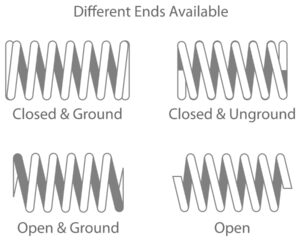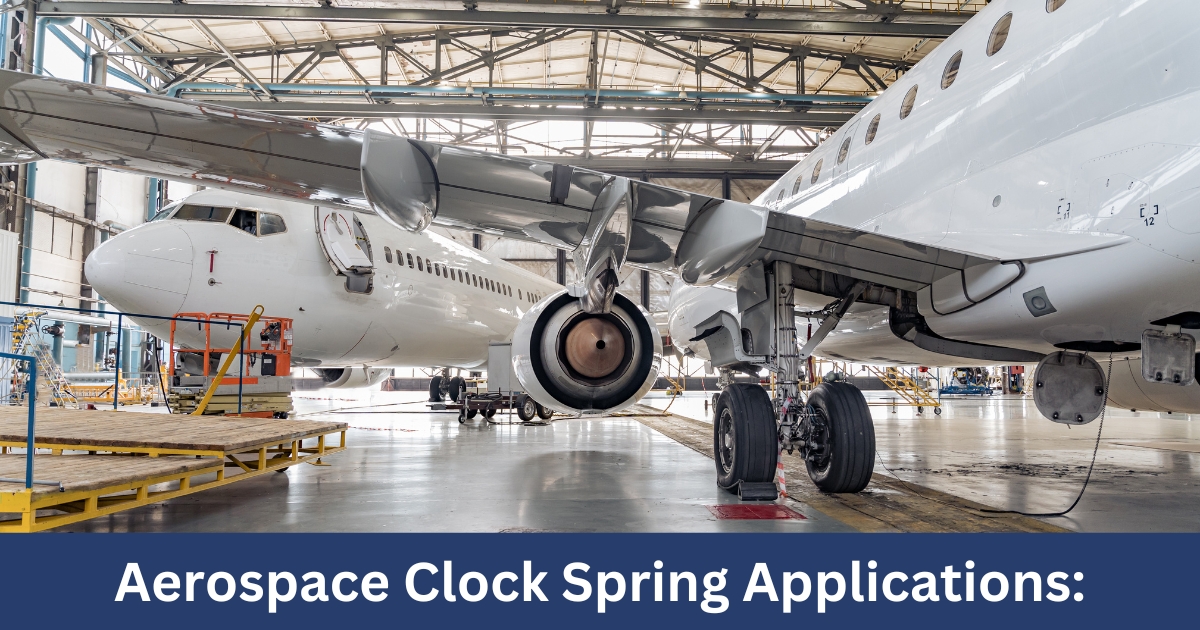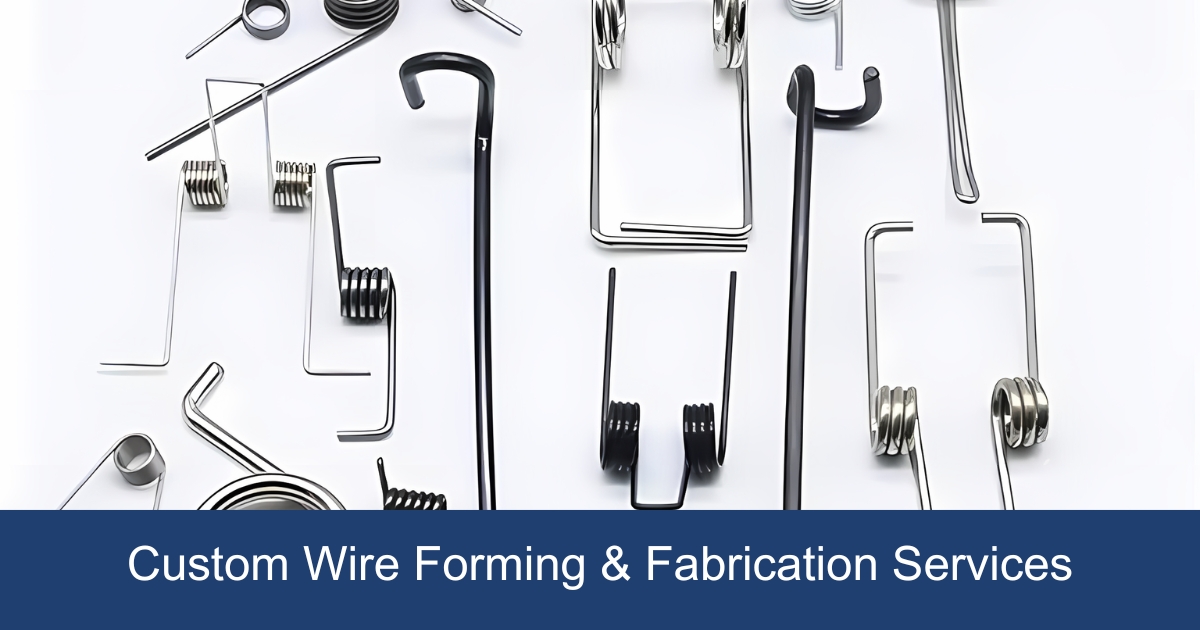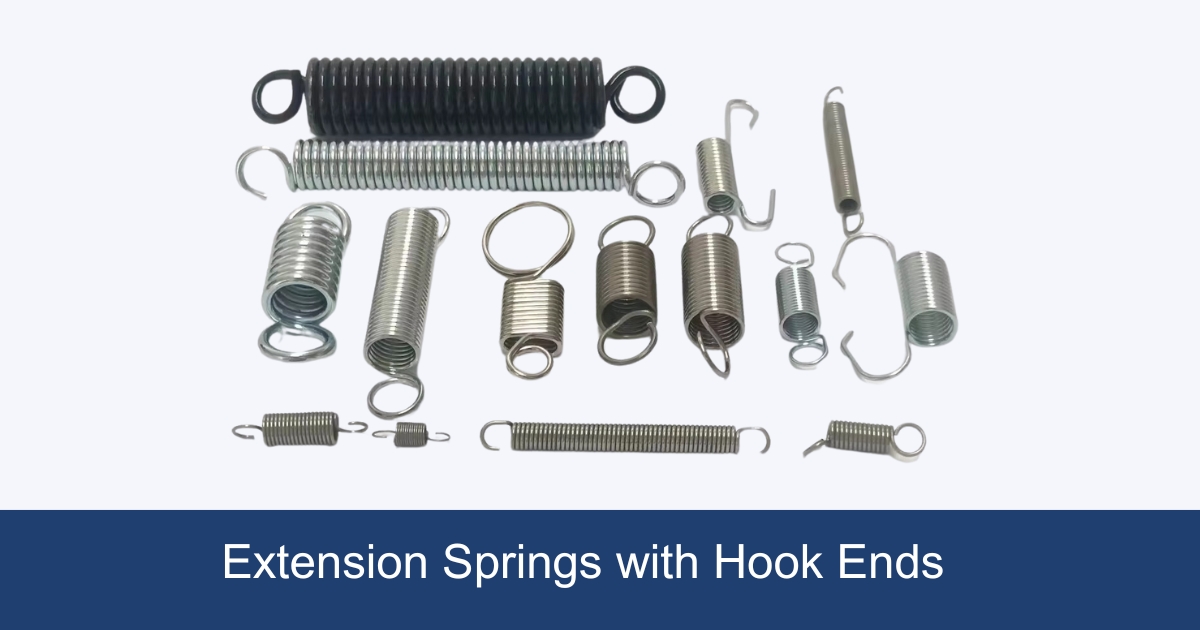Compression springs, essential in various applications from shock absorbers in automotive industries to the simple mechanics of a retractable pen, embody versatility and efficiency in handling compressive forces. Characterized by their cylindrically helical shape, these springs play a pivotal role across many industries, including electronics, mattress manufacturing, and even in the precision required in watchmaking. Their ability to store mechanical energy when compressed and release it upon the removal of the load, underscores their significance in the functionality of countless mechanical devices.
This article delves into the intricacies of compression spring design, exploring essential aspects such as spring rate, outer diameter, and spring constant, among others. By examining compression spring types, materials used in manufacturing, and the various configurations of spring ends, readers will gain valuable insights into maximizing the performance of these mechanical marvels.
How does a compression spring work?
The functionality of a compression spring is rooted in its ability to store energy when compressed and release it when the force is removed, enabling a wide range of mechanical applications. Here’s a breakdown of the essential concepts:
- Stress and Spring Constant:
- Stress: The stress within a compression spring is a critical factor determining its performance. It’s highest at the wire’s surface and varies with the load applied. This stress is crucial for understanding how much force a spring can withstand before deforming.
- Spring Constant (k): The spring constant is a measure of a spring’s stiffness. Calculated based on wire diameter, coil diameter, free length, and the number of active coils, it dictates how much force is needed to compress the spring by a certain amount. Springs following Hooke’s Law, where the force needed to compress the spring is directly proportional to the distance it’s compressed, are known as linear force springs.
- Spring Behavior on Compression:
- When compressed, the spring’s length reduces due to deformation, a process also known as deflection. This action stores energy within the spring.
- Upon the first compression, a spring might not return to its original height, a phenomenon known as ‘taking a set’, resulting in a slightly shorter spring.
- As the spring is compressed, it exerts a force in the opposite direction, attempting to return to its resting length, thereby releasing the stored energy.
- Design and Manufacturing Insights:
- Design Factors: Manufacturers can control the spring constant by altering design factors such as wire diameter and the number of coils. This customization is crucial for producing springs that meet specific requirements for various applications, from automobile suspensions to medical devices.
- Manufacturing Process: Most compression springs are created using an auto-coiler machine, which precisely coils the wire into the desired shape, size, and length. This process ensures that each spring is coiled to match its intended application’s specific needs.
This section has highlighted the foundational principles behind the working of compression springs, emphasizing the importance of stress, spring constant, and the manufacturing process in determining a spring’s functionality. Understanding these concepts is essential for anyone involved in designing or selecting compression springs for specific applications.
Types of Compression Springs

Compression springs are designed in a variety of shapes to meet diverse functional requirements across industries. Understanding these types is crucial for selecting the right spring for a specific application. Here’s a breakdown of the common types of compression springs:
- Straight Coil Springs: Characterized by coils that maintain a consistent diameter throughout the length of the spring. This uniformity makes them versatile for a wide range of applications.
- Convex Springs (Barrel-shaped): These springs feature coils with larger diameters in the middle and smaller diameters at both ends. The unique shape offers enhanced stability and resistance to buckling under compression.
- Concave Springs (Hourglass): With narrower coils in the middle than on either end, these springs are designed to provide a more precise control of spring rate and compression strength.
- Conical Springs (Tapered): Shaped like cones, with one end having a larger diameter than the other. This design allows for a compact spring that can fit in tighter spaces and provides a progressive compression rate.
- Variable Pitch Springs: These springs have varying distances between each coil, which allows for a customized compression rate and flexibility in performance.
- Volute Springs: Unlike traditional wire coil springs, volute springs are made from a curled sheet of metal, forming a cone shape. This design offers high compression strength in a compact form.
Incorporating the special request for table formatting, below is a comparison of these types based on shape and key benefits:
| Spring Type | Shape | Key Benefits |
|---|---|---|
| Straight Coil Springs | Cylindrical | Versatility and uniform compression force |
| Convex Springs | Barrel-shaped | Enhanced stability and resistance to buckling |
| Concave Springs | Hourglass | Precise control of spring rate and strength |
| Conical Springs | Tapered cone | Compact design, fits in tight spaces, progressive compression rate |
| Variable Pitch Springs | Varying coil distances | Customized compression rate, flexibility in performance |
| Volute Springs | Curled sheet, cone-shaped | High compression strength in a compact form |
This comparison highlights the diversity in compression spring designs, each tailored to specific functional needs and application requirements. Whether it’s for automotive suspensions, as pioneered by R. Tradwell in 1763, or the more familiar application in mattress coils patented in 1865, understanding these types and their benefits is essential for effective spring selection and design.
Key Parameters in Compression Spring Design

Designing an effective compression spring requires a deep understanding of several key parameters to ensure the spring meets the desired specifications for performance and durability. Here, we break down these critical factors into a digestible format.
Wire Diameter (d): The wire diameter is a crucial aspect of a compression spring’s design, directly influencing the spring’s strength and flexibility. A thicker wire diameter increases the spring’s load capacity but decreases its compressibility. It’s a fundamental parameter that affects the spring’s overall performance, including its stress distribution and fatigue life.
Outer Diameter (OD): The outer diameter plays a pivotal role in determining the spring’s fit within a mechanical assembly. It impacts the operational space required for the spring and can affect the spring’s rate by influencing the overall coil size. A larger OD generally means a softer spring, assuming other factors remain constant.
Inner Diameter (ID): The inner diameter is determined by subtracting twice the wire diameter from the outer diameter. It’s essential for ensuring there’s enough clearance for the spring to function without interference. The ID is also critical when the spring must fit over a rod or into a hole.
Free Length (L): Free length refers to the length of the spring when it is not under any load. It’s vital for understanding how much the spring can be compressed and its potential stroke in an application. The free length affects how much load a spring can accommodate before reaching solid height.
Total Coils (N): The total number of coils includes both active and inactive coils. This count influences the spring’s flexibility and load-bearing capacity. More coils can distribute the load more evenly, enhancing the spring’s ability to compress without damage.
Active Coils (Na): Active coils are those that contribute to the spring’s elasticity and compress under load. The difference between total and active coils usually comes down to the end treatment of the spring; inactive coils are those that are made inactive by design, such as being closed or ground. Active coils are crucial for determining the spring’s rate and flexibility.
Spring Rate (k): The spring rate, or stiffness, indicates how much force is needed to compress the spring by a unit of length. It’s calculated based on the wire diameter, coil diameter, and number of active coils. The spring rate is fundamental for matching the spring to its intended load and application requirements, ensuring that the spring compresses in a controlled manner under load.
Spring Constant(k) : The spring constant quantifies a spring’s stiffness, indicating the force needed to compress it by a unit distance, such as Newtons per meter. A higher (k) value means the spring is stiffer, requiring more force to compress. This parameter is crucial for ensuring the spring meets the specific operational demands of its application, influencing both performance and durability.
Load and Deflection Requirements: Load and deflection requirements are essential for a spring’s design, defining the maximum force it can handle and its allowable compression. These factors ensure the spring performs reliably under expected operational conditions without permanent deformation or failure, balancing the need for both support and flexibility within a mechanical system.
Compression Spring Ends Configuration

Compression springs come in various end configurations, each tailored to specific applications and benefits. Understanding these configurations is essential for selecting the right spring for your project. Here’s a breakdown of the most common types:
- Closed and Squared Ends: This is the most common type, where the last coil is closed, creating a flat end. It allows the spring to stand vertically when placed on a flat surface, making it suitable for applications requiring stable support.
- Closed and Ground Ends: These springs undergo additional processing to grind the ends after manufacturing, offering better seating and reducing the risk of buckling. They are recommended for applications where a straight vertical position is crucial.
- Open Ends: In this configuration, all coils are open, making the spring weaker but requiring less space. It’s used in designs where space conservation is a priority, but it requires additional support as it cannot stand vertically on its own.
- Double-Closed Ends: Featuring two closed coils at each end, these springs provide enhanced stability, especially useful in high slenderness ratio applications to prevent buckling.
To visually compare these configurations and their applications, the following table is presented:
| End Configuration | Description | Benefits | Common Applications |
|---|---|---|---|
| Closed and Squared | Last coil closed, creating a flat end | Stability, can stand vertically | General use, where vertical stability is required |
| Closed and Ground | Ends are ground flat after manufacturing | Better seating, reduced buckling | Applications needing precise alignment |
| Open Ends | All coils open, ends not closed or ground | Requires less space | Space-constrained designs |
| Double-Closed Ends | Two closed coils at each end | Enhanced stability, prevents buckling | High slenderness ratio applications |
Combining different types of ends on the same spring is also possible and should be discussed with the spring manufacturer to meet specific design requirements. For instance, one end could be closed and squared for stability, while the other end remains open to fit into a tighter space. This flexibility in design allows for a wide range of applications, from automotive to industrial machinery, where the specific end configuration can significantly impact the spring’s performance and integration into the system.
Manufacturing Process of Compression Springs
The manufacturing process of compression springs is a detailed procedure that involves several critical steps to ensure the springs meet specific requirements for performance and durability. Here’s a breakdown of the process:
1. Initial Steps and Coiling
- Coiling Process: The wire is fed through a straightening machine to ensure it is perfectly straight before coiling. Using CNC coiling machines, the wire diameter can range from 0.006” (0.15 mm) to 0.276” (7.0 mm). The machine’s arms and arbors are preprogrammed to adjust for the spring’s free length, pitch, and coils.
- Forming and Bending: For more complex shapes, a CNC spring former machine performs various bends, hoops, and radii to achieve the desired spring design.
2. Heat Treating and Grinding
- Heat Treating: This step is crucial for the spring to retain its memory, allowing it to return to its original shape after being compressed. The process involves heating the spring to a specific temperature and then cooling it down.
- Grinding: If the spring’s design calls for it, the ends are ground to make them perpendicular to the spring’s axis. This creates a larger load-bearing surface and ensures the spring stands correctly when compressed.
3. Finishing Touches
- Coating and Finishing: To improve durability and appearance, springs undergo various finishing processes. These can include powder coating for corrosion resistance, shot peening to increase surface hardness, and stress relieving to reduce brittleness.
- Quality Control: Each spring is subjected to rigorous testing, including tension, fatigue, and performance testing, to ensure it meets the required specifications.
To provide a clearer understanding, the following table summarizes the key steps in the manufacturing process:
| Step | Description | Purpose |
|---|---|---|
| Coiling | Wire is straightened, then coiled into the desired shape using CNC machines. | Forms the basic shape of the spring, ensuring precise dimensions. |
| Heat Treating | Springs are heated and then cooled to retain their shape memory. | Enables the spring to return to its original shape after compression. |
| Grinding | Ends of the spring are ground to make them perpendicular to the axis. | Creates a flat surface for better load distribution and stability. |
| Coating/Finishing | Various processes such as powder coating or shot peening are applied. | Enhances durability, appearance, and resistance to environmental factors. |
| Quality Control | Springs undergo tension, fatigue, and performance testing. | Ensures the spring meets all specifications and performance requirements. |
This structured approach to manufacturing not only ensures the production of high-quality compression springs but also allows for custom designs to meet unique application needs.
FAQs
What is the Appearance of a Compression Spring?
A compression spring is characterized by its helical or spiral shape. In its uncompressed state, it displays an open-coiled structure. When a force is applied along the spring’s axis, the coils compress against each other, reducing the spring’s length and enabling it to store energy.
How Can the Strength of a Compression Spring Be Increased?
To alter the strength of a compression spring, adjusting the wire diameter relative to the spring’s overall diameter is key. Utilizing a thicker wire or reducing the coil’s diameter increases the spring’s strength. Conversely, a thinner wire or a wider coil diameter decreases the spring’s force.
What Method Is Used to Determine a Compression Spring’s Strength?
The strength of a compression spring is determined by measuring the force required to compress it, typically using a spring scale or a force gauge. This force measurement is then applied to the formula F = kx to calculate the spring’s compression.
What Function Does a Compression Spring Serve?
Compression springs are designed to resist linear compressing forces, making them highly efficient at storing energy. The energy a compression spring can store is influenced by the material it’s made from, its wire diameter, and the number of coils it has.



